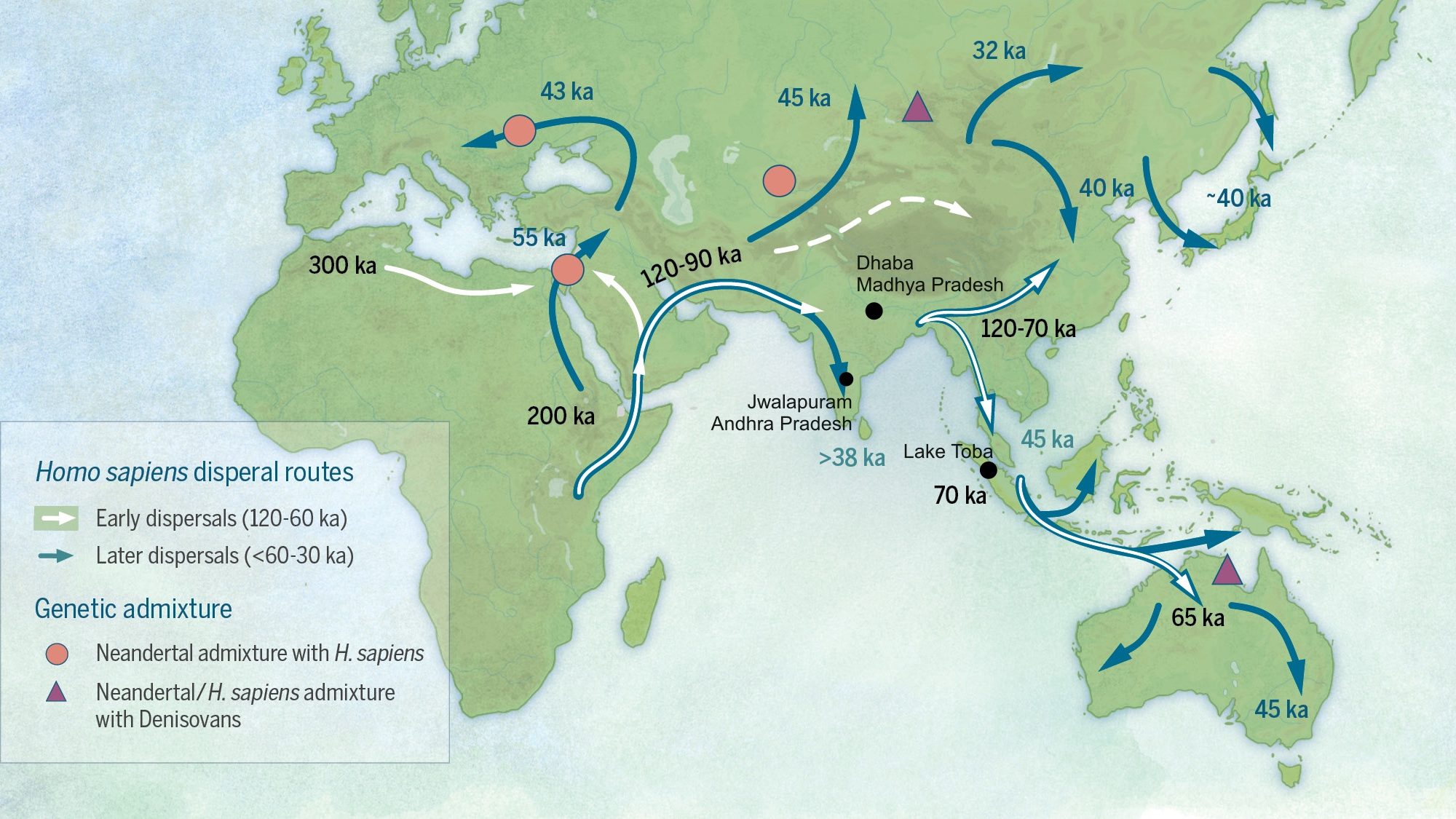Featured image: Katerina Douka, Michelle O’Reilly, Michael D. Petraglia – On the origin of modern humans: Asian perspectives; Science 08 Dec 2017: Vol. 358, Issue 6368, DOI: 10.1126/science.aai9067 [1], CC BY-SA 4.0 (Wikimedia Commons) with minor edits
Paper: Human occupation of northern India spans the Toba super-eruption ~74,000 years ago
Authors: Chris Clarkson, Clair Harris, Bo Li, Christina M. Neudorf, Richard G. Roberts, Christine Lane, Kasih Norman, Jagannath Pal, Sacha Jones, Ceri Shipton, Jinu Koshy, M.C. Gupta, D.P. Mishra, A.K. Dubey, Nicole Boivin & Michael Petraglia
Modern humans evolved around 200,000 years ago in Africa, and dispersed from there to other parts of the globe. The Out of Africa theory is a well-established model that explains the early dispersal of Homo sapiens or modern humans from Africa, into Asia and Oceania. Among the routes proposed is the Southern Route migration from East Africa to the Near East, across the Red Sea, and around Arabia and the Persian Plateau to India, and then finally with modern humans settling in Asia and Australasia.
India’s geographic location is a key piece of this puzzle. Mitochondrial DNA of contemporary populations in India indicate that the country was an important stepping stone in the colonisation of Australasia. However, the timeline for the proposed Southern Route migration is still a matter of debate – could dating the arrival and settlement of modern humans in India provide some clues?
Continue reading “What lies beneath: tracing human migrations through stone tools, India”
